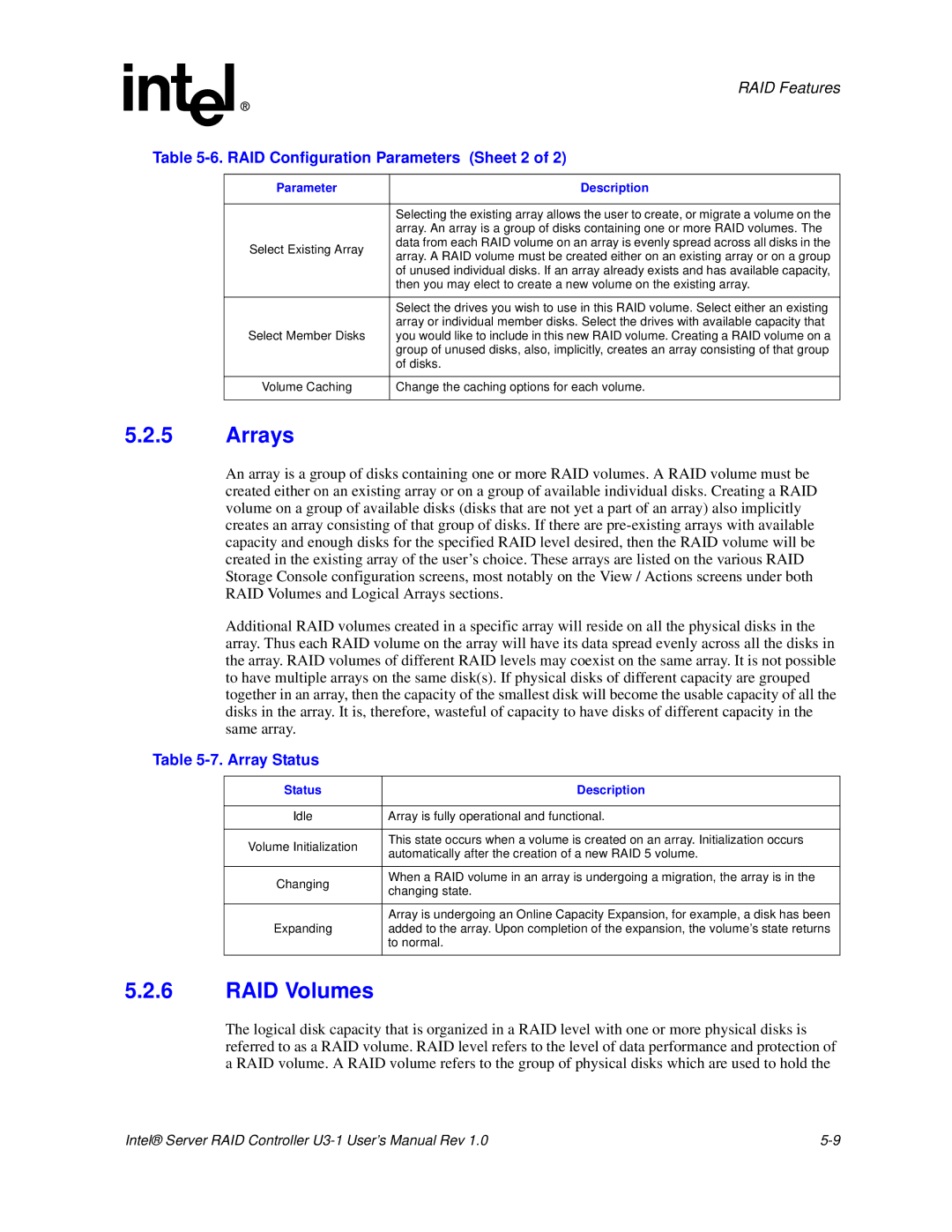
RAID Features
Table 5-6. RAID Configuration Parameters (Sheet 2 of 2)
Parameter | Description | |
|
| |
| Selecting the existing array allows the user to create, or migrate a volume on the | |
| array. An array is a group of disks containing one or more RAID volumes. The | |
Select Existing Array | data from each RAID volume on an array is evenly spread across all disks in the | |
array. A RAID volume must be created either on an existing array or on a group | ||
| ||
| of unused individual disks. If an array already exists and has available capacity, | |
| then you may elect to create a new volume on the existing array. | |
|
| |
| Select the drives you wish to use in this RAID volume. Select either an existing | |
| array or individual member disks. Select the drives with available capacity that | |
Select Member Disks | you would like to include in this new RAID volume. Creating a RAID volume on a | |
| group of unused disks, also, implicitly, creates an array consisting of that group | |
| of disks. | |
|
| |
Volume Caching | Change the caching options for each volume. | |
|
|
5.2.5Arrays
An array is a group of disks containing one or more RAID volumes. A RAID volume must be created either on an existing array or on a group of available individual disks. Creating a RAID volume on a group of available disks (disks that are not yet a part of an array) also implicitly creates an array consisting of that group of disks. If there are
Additional RAID volumes created in a specific array will reside on all the physical disks in the array. Thus each RAID volume on the array will have its data spread evenly across all the disks in the array. RAID volumes of different RAID levels may coexist on the same array. It is not possible to have multiple arrays on the same disk(s). If physical disks of different capacity are grouped together in an array, then the capacity of the smallest disk will become the usable capacity of all the disks in the array. It is, therefore, wasteful of capacity to have disks of different capacity in the same array.
Table 5-7. Array Status
Status | Description | |
|
| |
Idle | Array is fully operational and functional. | |
|
| |
Volume Initialization | This state occurs when a volume is created on an array. Initialization occurs | |
automatically after the creation of a new RAID 5 volume. | ||
| ||
|
| |
Changing | When a RAID volume in an array is undergoing a migration, the array is in the | |
changing state. | ||
| ||
|
| |
| Array is undergoing an Online Capacity Expansion, for example, a disk has been | |
Expanding | added to the array. Upon completion of the expansion, the volume’s state returns | |
| to normal. | |
|
|
5.2.6RAID Volumes
The logical disk capacity that is organized in a RAID level with one or more physical disks is referred to as a RAID volume. RAID level refers to the level of data performance and protection of a RAID volume. A RAID volume refers to the group of physical disks which are used to hold the
Intel® Server RAID Controller |
